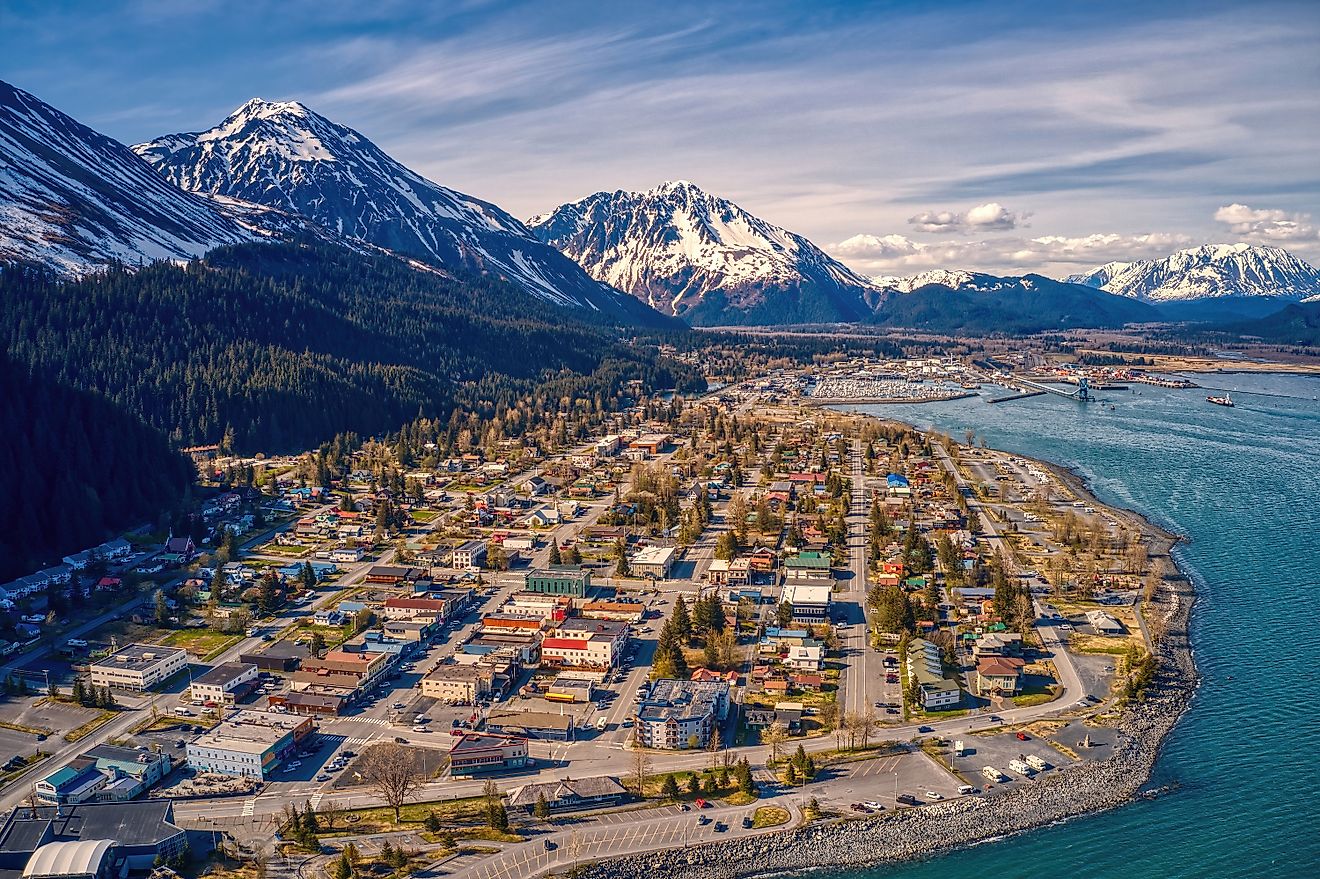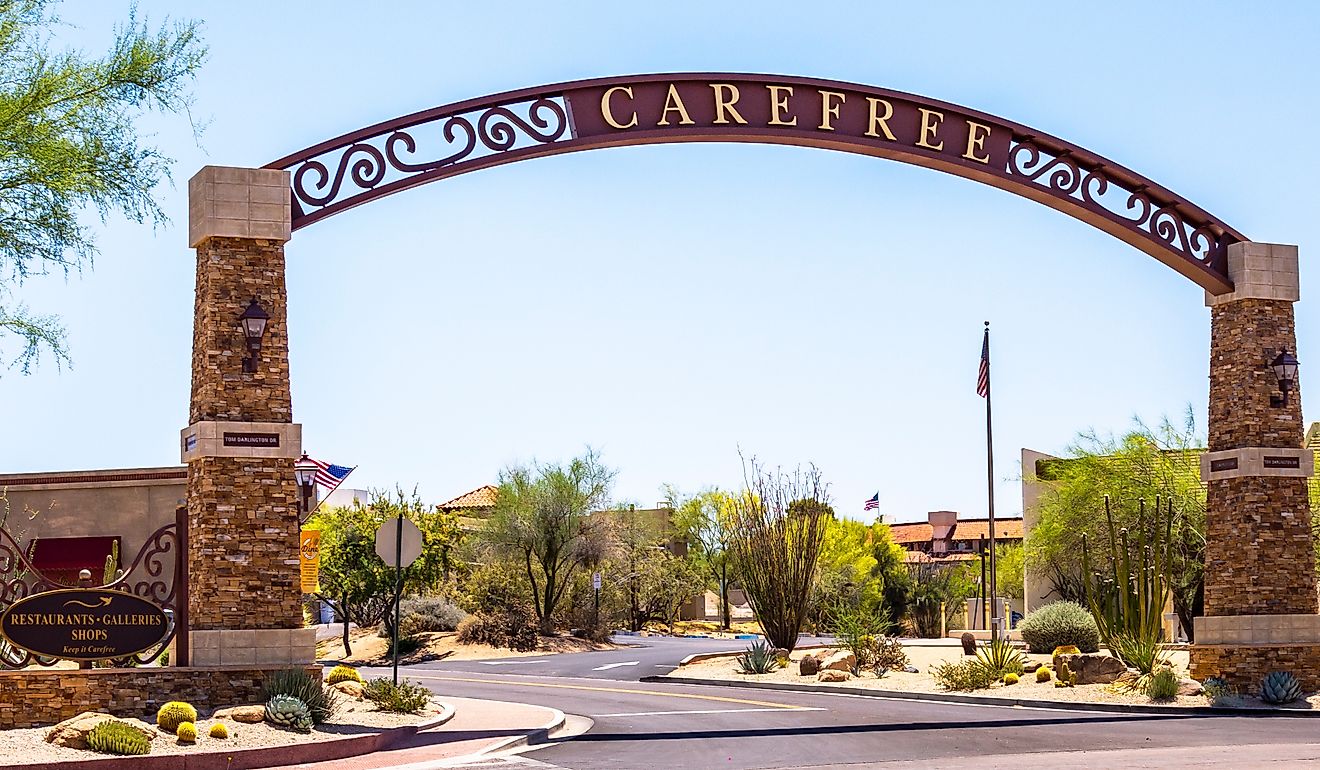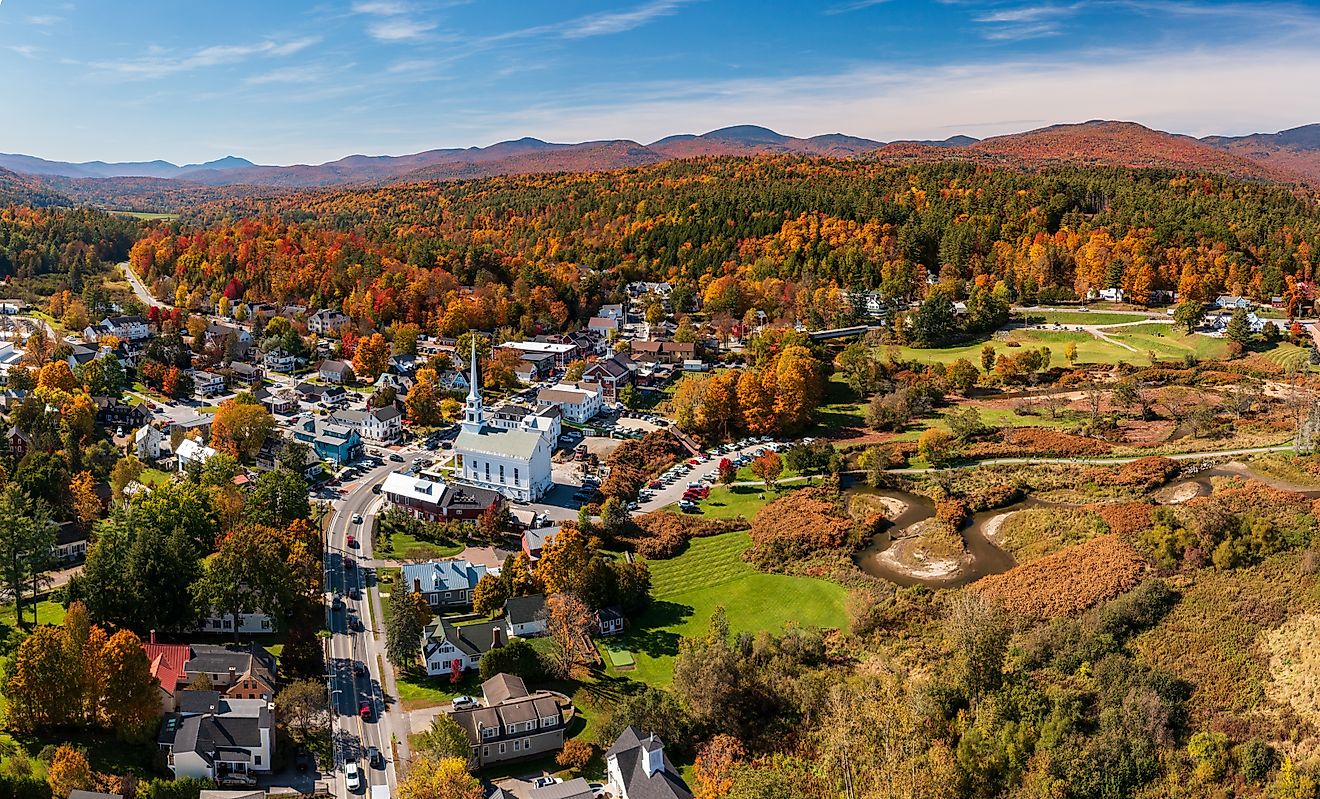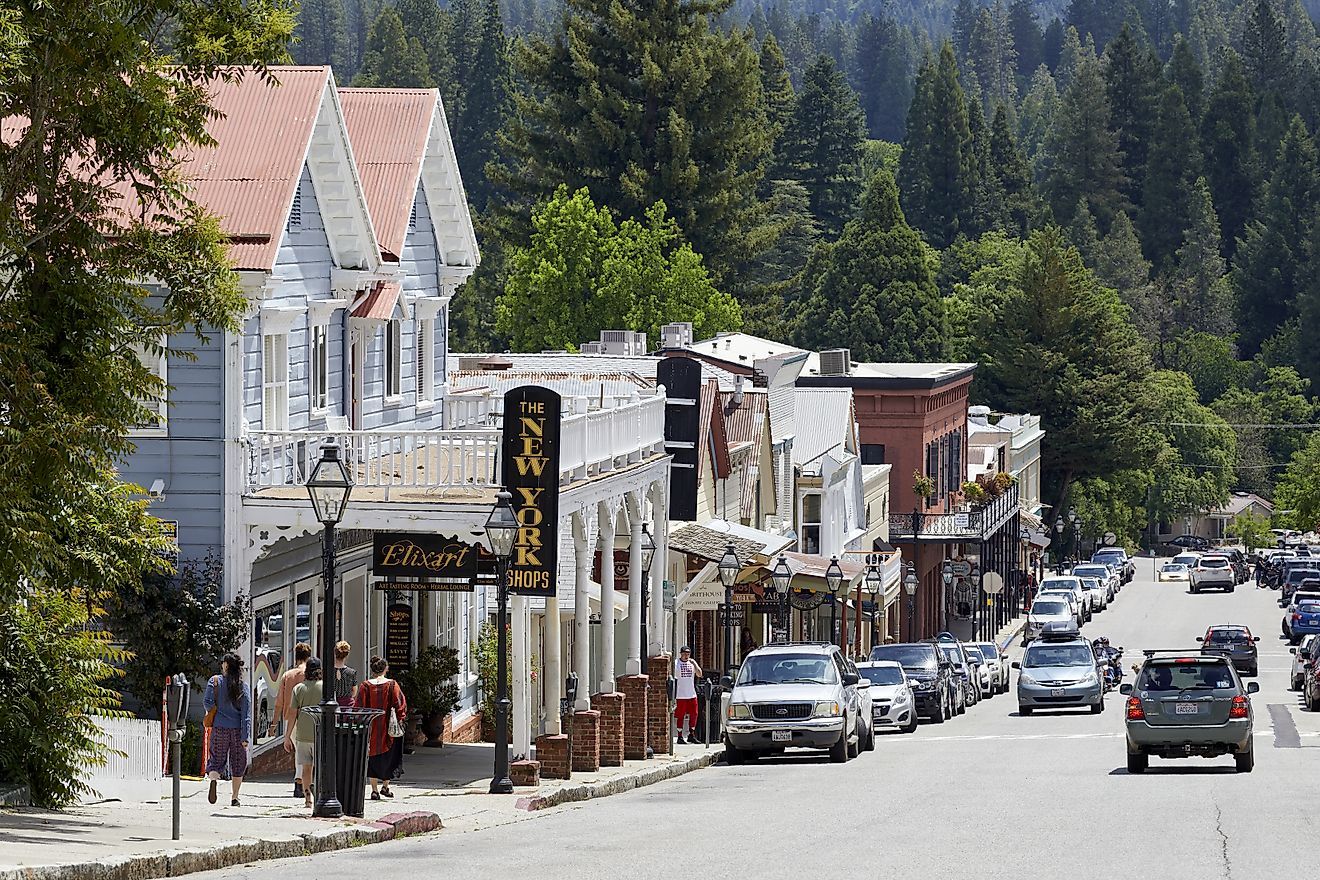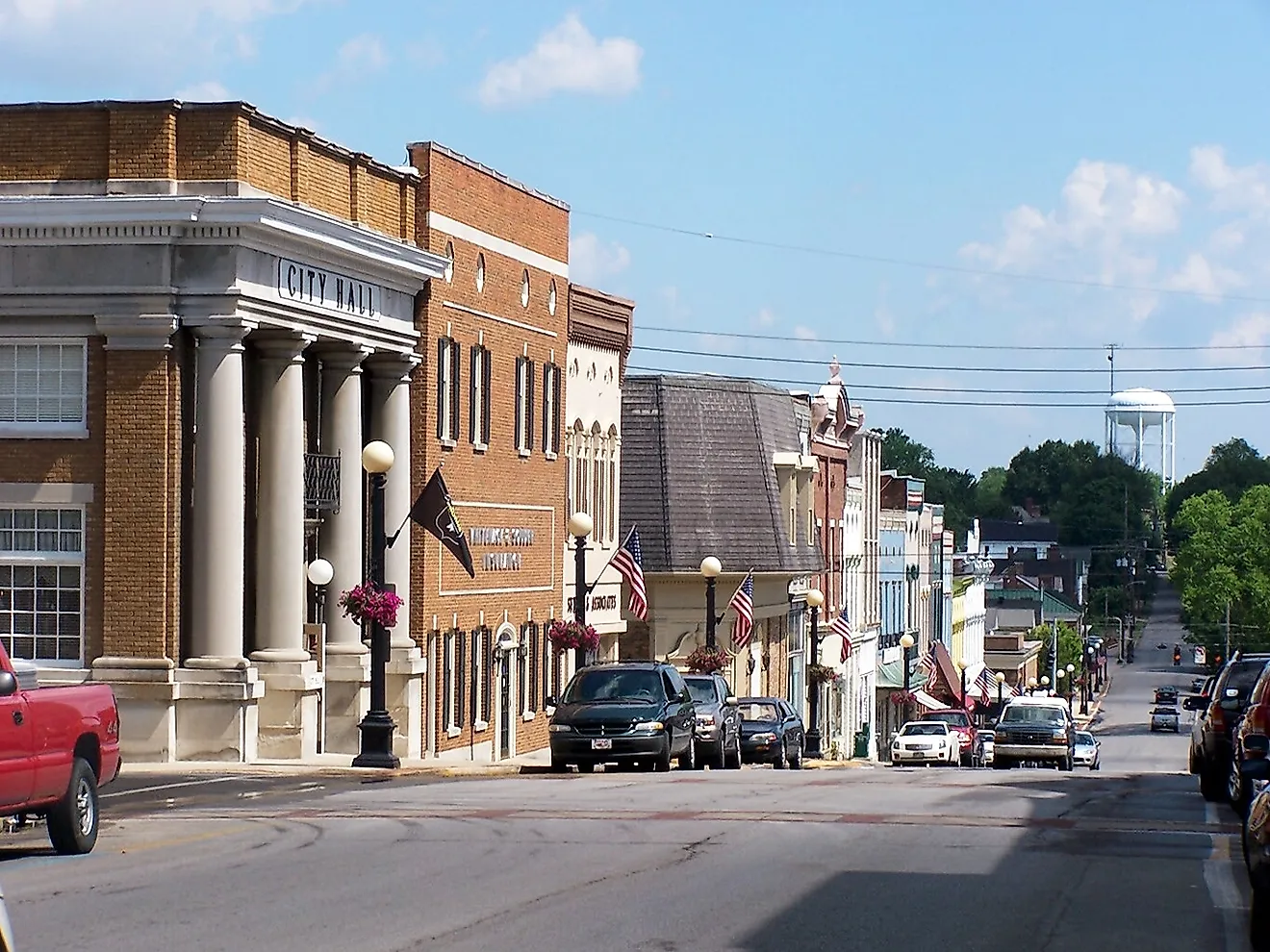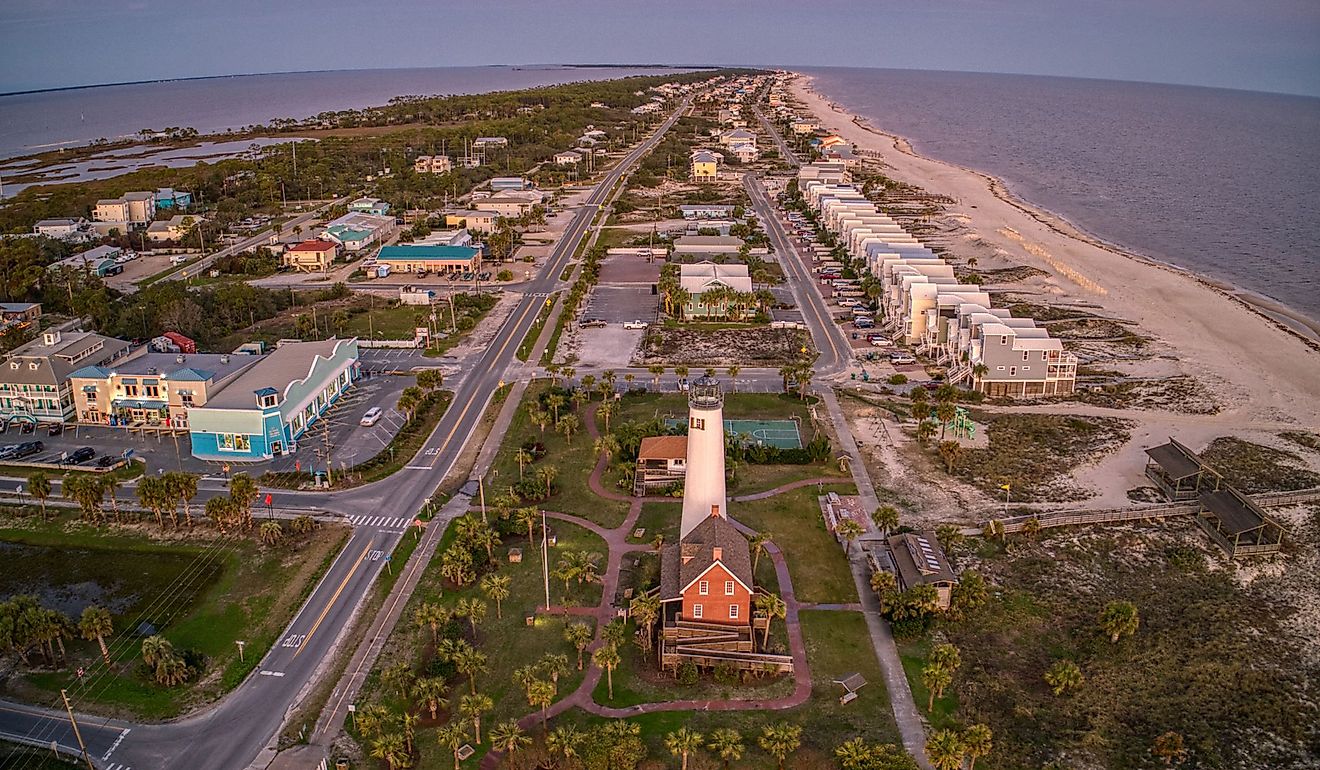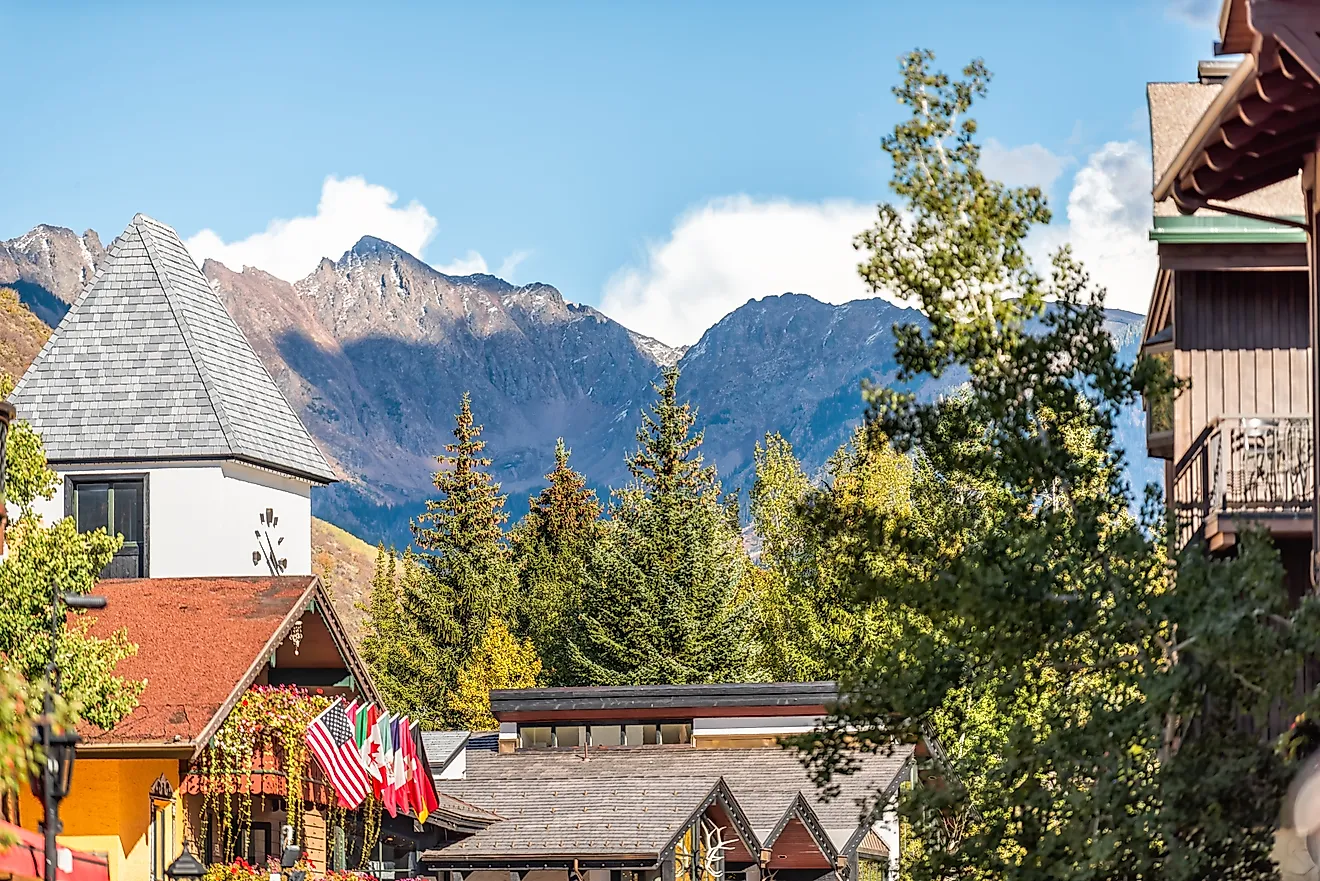
8 Four-Season Value Towns In Indiana For Retirees
Indiana’s small towns offer something rare for retirees: four true seasons and year-round livability without the high housing costs of bigger metros. Picture a full calendar of activities: spring festivals, active summer lake days, walking trails lined with gold and crimson leaves, and cozy downtowns blanketed in snow. This selection focuses on places that stay lively 365 days a year. As of 2025, each of these communities maintains a median home listing price below the state’s average, allowing you to stretch your savings further. Continue reading to discover Indiana towns that combine natural surroundings, affordability, and a neighborly spirit.
Connersville
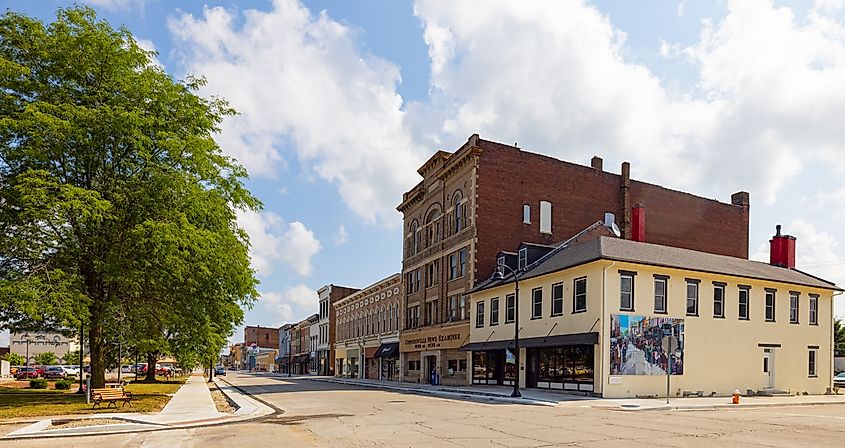
On the banks of the Whitewater River, Connersville reflects its early canal history through a walkable downtown and preserved 19th-century architecture. The median home listing price here sits around $185,000, keeping housing well below the state median listing price of about $275,000. The overall cost of living is approximately 21 percent lower than the national average, providing retirees with extra room in their budgets for travel and hobbies.
The Whitewater Valley Railroad, a seasonal excursion line that departs from Connersville and winds along the river to the canal village of Metamora, traces the town’s transportation roots. The Historic Canal House museum highlights the community’s evolution from canal commerce to carriage and automobile manufacturing. Local parks such as Roberts Park and the paved Nickel Plate Trail provide space for walking, cycling, and birdwatching.
Residents have access to care through Reid Health Connersville, which currently provides outpatient services and specialty clinics. A new hospital campus on Park Road is scheduled to open in spring 2026, expanding local access to emergency and inpatient services. The Fayette County Senior Center serves as a lively hub with lunches, fitness sessions, crafts, and volunteer programs. That emphasis on connection extends to community events like the annual Fayette County Free Fair, where 4-H shows, livestock exhibits, and arena events draw residents from across the county, and the Celebration in the Ville festival, hosted in the historic downtown with music, food, craft vendors, a car show, and family-friendly activities. Connersville’s proximity to both Indianapolis and Cincinnati also makes it easier to reach major hospitals, airports, and cultural and sporting events without giving up small-town simplicity.
Hobart
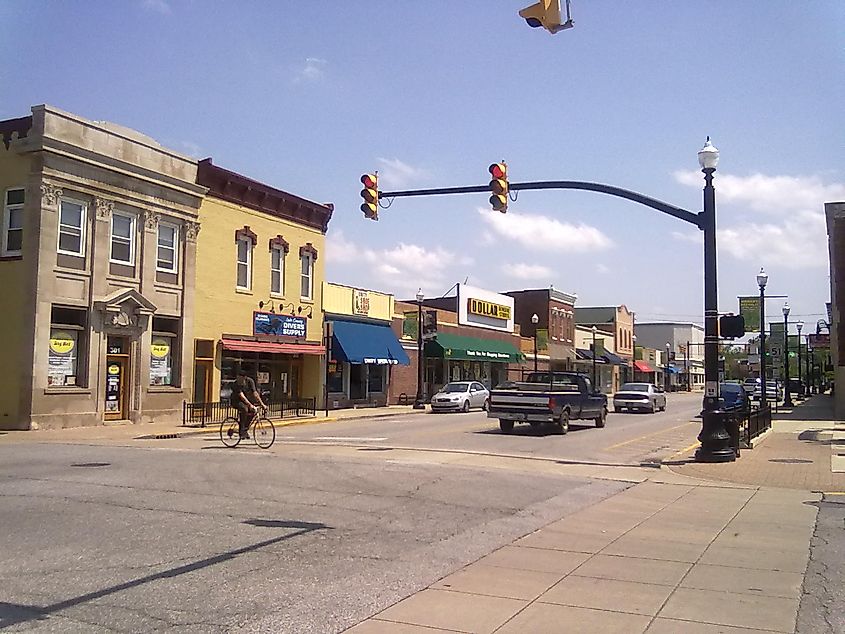
With a population of just over 29,000, Hobart provides small-city convenience along with outdoor amenities that make it easy to stay active year-round. The median home listing price sits under $250,000, offering strong value for those who want proximity to both Lake Michigan and Chicago without the higher cost of many suburbs.
Hugging the waterfront, Main Street is where you’ll find many of Hobart’s highlights. The restored Hobart Art Theatre hosts concerts and comedy shows in a historic setting, while local restaurants such as Bon Vie offer meals with views across Lake George. Walking paths, picnic areas, and fishing piers run along the shoreline of Lake George, providing outdoor enjoyment well into fall. Summer brings events like the Lakefront Festival with live music at the Revelli Bandshell, creating an active community atmosphere. When winter settles in, nearby Deep River County Park offers cross-country skiing and wooded trails for cold-weather walks.
Healthcare needs are met by St. Mary Medical Center, a full-service hospital known for its cardiac, orthopedic, and rehabilitation programs. Hobart’s position in Northwest Indiana also places larger regional hospitals and specialty clinics within a short drive. Beyond medical care, a steady calendar of programs at the Maria Reiner Center, such as senior fitness classes, sports leagues, art workshops, and volunteer drives, keeps residents engaged and helps newcomers settle in more quickly. With easy access to I-65 and nearby shopping and dining districts, Hobart offers a comfortable, well-connected environment for retirees.
Huntington

Framed by rolling farmland and the Little River, Huntington provides a calm, affordable setting in northeast Indiana with the convenience of Fort Wayne about 40 minutes away. The median home listing price is about $180,000, and the cost of living is roughly 16 percent lower than the national average, making it easier for retirees to settle here comfortably.
In Huntington, community ties run deep. The Huntington County Council on Aging helps older residents stay connected and mobile through services such as educational programs, foot-care clinics, and county-wide transportation that support daily life for retirees. Staying active is straightforward as well. The town’s Court Sports Complex includes areas for tennis, basketball, pickleball, and horseshoes, giving older adults accessible options throughout the year. Parkview Huntington Hospital, part of the Parkview Health system, provides full medical services minutes from downtown.
The Courthouse Square Historic District serves as the community’s centerpiece. Mornings might start at Coffee Bean Counter, a café set inside a century-old bank where the vault has been turned into a quiet sitting nook. From there, you might explore local shops, walk the Erie Rail Trail, or visit the terraced Sunken Gardens, a reclaimed quarry turned public park. Lunch could be enjoyed at Nick’s Kitchen, a century-old diner celebrated as the birthplace of the breaded pork tenderloin sandwich, or at Pizza Junction, housed in an old railway depot beside the train tracks. In the afternoon, the Huntington County Historical Museum traces the area’s canal and railroad heritage through detailed exhibits that connect past and present.
Logansport
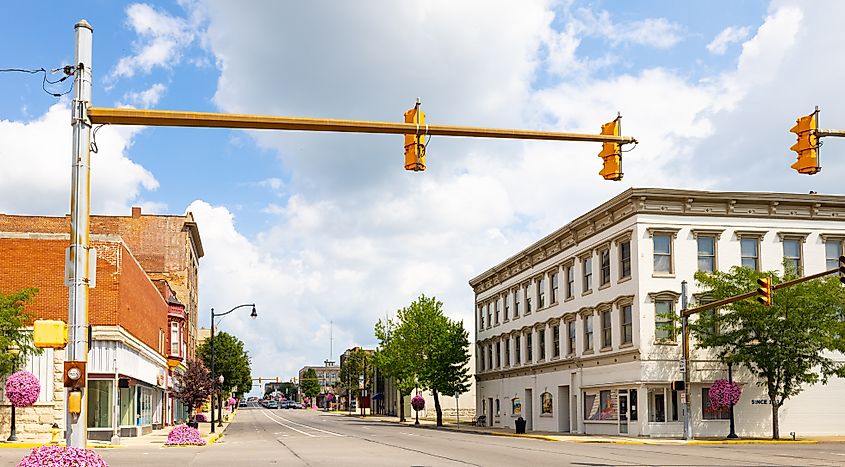
Retirees in Logansport find daily routines supported by reliable services, community events, and a downtown that retains a strong local identity. Housing remains affordable, with a median listing price around $180,000 and a cost of living about 21 percent below the national average. Healthcare is available through Parkview Logansport Hospital, which offers orthopedic services, cardiac care, rehabilitation, and multiple outpatient clinics on one campus.
The city is also known for its historic architecture. The Bankers Row Historic District features about 20 homes from the late 1800s, and a 2016 survey identified dozens of additional structures eligible for national historic status. These buildings give the city center a distinctive older-neighborhood feel.
Downtown, the restored State Theatre hosts movies and local performances in its Art Deco interior, while Black Dog Coffee offers a relaxed spot to read or meet friends. Outdoors, residents walk the paved paths at Riverside Park, home to the vintage, hand-carved Cass County Dentzel Carousel, a National Historic Landmark with original wooden animals and period detailing.
For retirees who don’t drive or only drive occasionally, Cass Area Transit provides free city-bus service Monday through Saturday and an on-demand ride-by-appointment option for groceries, appointments, and other essentials. This combination of services helps older adults stay independent without the stress of heavy traffic.
New Castle

Set along the Big Blue River, New Castle is a place where each season shapes the rhythm of local life. When spring arrives, anglers are drawn to Summit Lake State Park, wildflowers fill the edges of the Zeigler Woods Nature Preserve on the southwest side of the park, and the HealthRidge Walking Club heads outdoors from its wellness center for low-impact walks on cool evenings. Summer brings a different energy with picnics at Osborne Park, concerts at the Arts Park, and quiet strolls through the Henry County Farmer’s Market to pick out local produce and baked goods.
When fall arrives, locals make their way to Jacob’s Family Orchard to walk the sunflower trail, pick apples, and stock up on cider slushies or fresh doughnuts. The wooded areas around Summit Lake also become some of the county’s favorite spots for an easy leaf-peeping stroll. Winter slows everything down again, and the quiet trails near Zeigler Woods, along with the holiday lights around the Henry County Courthouse, give the season a calm, hometown feel.
Retirees will also find New Castle easy to navigate. Homes list for around $175,000, putting ownership within reach for many fixed-income buyers. Local services are straightforward, with primary care, specialist visits, and rehabilitation available through Henry Community Health, located a short drive north of downtown. The Henry County Senior Center adds another steady resource, offering fitness classes, games, crafts, technology help, and weekday lunches throughout the year.
Peru
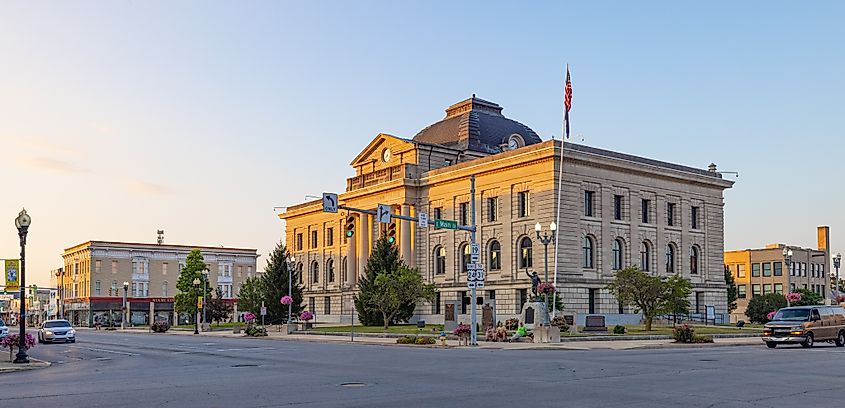
Known as the “Circus Capital of the World,” Peru pairs everyday quiet with a cultural legacy that is entirely its own. The town’s circus roots are easy to explore year-round. The International Circus Hall of Fame displays restored wagons, costumes, and training equipment inside historic winter-quarters buildings, while the Circus City Museum preserves practice rings and memorabilia from decades of local performances.
Peru’s natural setting adds another dimension. The Wabash River runs along the edge of town, creating a calm route for morning walks, and the Miami County Museum fills a full afternoon with more than 75,000 artifacts covering local history, aviation, and early settlement. In summer, the Circus City Festival takes over downtown for a week, with parades, youth-led performances from the Peru Amateur Circus, and a carnival atmosphere that brings residents together.
With a population of about 11,000, Peru already has a meaningful older-adult presence, with roughly 19 percent of residents 65 and above. That age mix shapes local programs, public spaces, and the community’s relaxed pace. Affordability is another strong point, with the median home listing price around $170,000 and the cost of living sitting about 20 percent below the national rate. Routine medical care is easy to reach through Dukes Memorial Hospital, a 25-bed critical access facility that serves as the community’s main health hub.
Richmond

Located near the Indiana and Ohio border, Richmond sits within about an hour’s drive of Indianapolis and Cincinnati, giving residents straightforward access to big-city services in several directions.
One of Richmond’s standout outdoor spaces is Hayes Arboretum, 466 acres of protected wetlands and forest with walking paths that change through the seasons, from spring wildflowers to quiet winter woods. The Whitewater River adds another layer, offering calm waterfront views and gentle walking routes, including a 185-foot swinging pedestrian bridge that crosses the river to Wayne County Veterans Memorial Park.
Autumn is an especially colorful time here because Richmond lies along the Historic National Road, where fall drives include tree-lined stretches, small bridges, and farmstead views. The city’s arts tradition shows up in the Richmond Art Museum, one of the oldest art museums in Indiana. In winter, activity shifts toward the Depot District, where shops and bakeries are decorated for the holidays and stay welcoming on cold days. Richmond’s well-known Chocolate Trail, a free self-guided route that links local bakeries, cafés, and candy shops, makes for a sweet outing in any season.
For older adults considering a move, Richmond keeps things manageable. The median home listing price sits around $155,000, and medical services are easy to reach at Reid Health without crossing into Ohio. Social opportunities come naturally too, with the Richmond Senior Recreation Center offering a steady rotation of classes and gatherings that help you meet people quickly.
Wabash

Just a 20-minute drive from Peru, Wabash is the kind of place where retirees can settle into a steady routine without giving up cultural or outdoor experiences. The Honeywell Center is a major draw, offering concerts, theatre productions, classes, and community programming throughout the year. Nearby, Charley Creek Gardens provides landscaped paths, water features, and quiet spots for unhurried walks. The Wabash River Trail follows about seven miles of paved path along the river between Wabash and Lagro, offering gentle walks through wooded sections, river views, and stretches that are friendly to wildlife.
Local history is easy to explore at Paradise Spring Historical Park, which highlights Wabash’s early settlement heritage and offers walking trails close to downtown. The town’s rural surroundings also give residents simple outings such as picking apples at David Doud’s Countyline Orchard or browsing small farm markets in late summer and early fall.
Living here, seniors can feel more secure about their health, as Parkview Wabash Hospital offers 24-hour emergency care and a wide range of medical services from a modern campus on John Kissinger Drive. The median home listing price of approximately $188,000 makes this town an appealing place to retire, especially for those who want a blend of arts, history, and outdoor activity in one compact community.
Why Retire in Indiana

Indiana stands out for retirees who want manageable costs, year-round recreation, and communities that feel easy to navigate. Across the towns highlighted here, several sit around 18 to 21 percent below national cost-of-living averages, while others track closer to the state average yet remain far more attainable than major cities. Populations span roughly 10,300 in Wabash and about 35,500 in Richmond, maintaining close-knit vibes without losing access to essential services. Many of these places lie within an hour of Indianapolis, Cincinnati, Fort Wayne, or the Chicago region, providing access to specialty medical care, major shopping districts, entertainment, and larger events.
Add Indiana’s extensive trail systems, state parks, and its reputation for “Hoosier Hospitality,” and you have a set of towns well suited for anyone evaluating retirement options. You might be preparing for the transition, or already enjoying retirement and considering a new setting. In either case, these communities show how far your dollars and your time can go.
